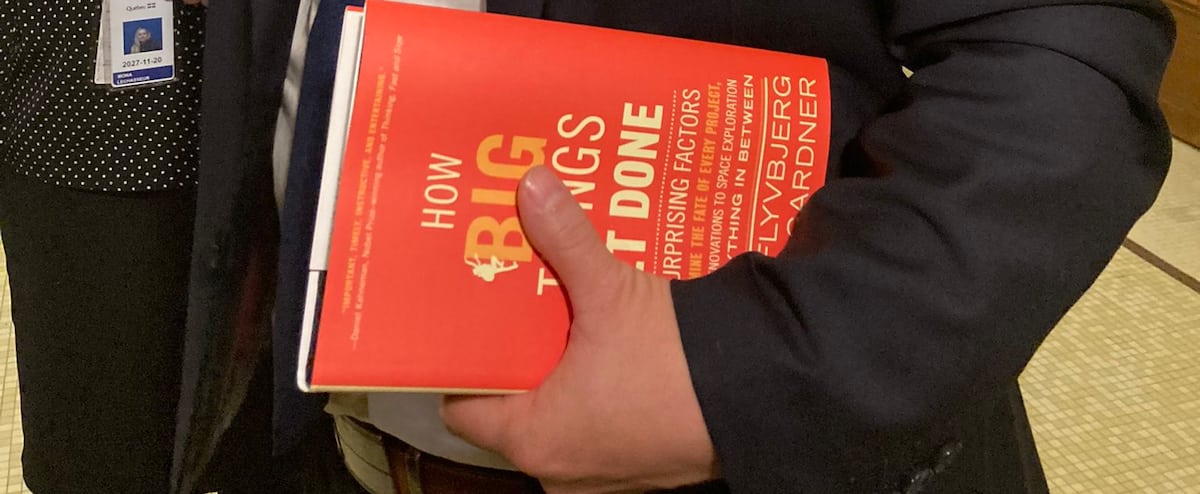Five years after coming to power, the ministers of the CAQ government are still looking for how to carry out major projects. To achieve this, they are currently drawing inspiration from the work How Big Things Get Done. However, the author is also very critical of political bias.
Since the withdrawal of the tramway project from the hands of the mayor of Quebec, the ministers of Quebec have been carrying around a book entitled How Big Things Get Done (How major projects are accomplished) in the corridors of the National Assembly.
On Wednesday, it was the Minister of Infrastructure and the person responsible for the National Capital, Jonatan Julien, who proudly displayed his reading with the orange cover published in February 2023 by Professor Bent Flyvbjerg and Canadian journalist Dan Gardner.
Leaving the Council of Ministers the same day, it was the turn of the Minister of Transport, Geneviève Guilbault, to hold in her hands the work which explains a way to successfully deliver major projects.
However, it was the Prime Minister’s chief of staff, Martin Koskinen, who started the ball rolling on the social network LinkedIn a few days after the meeting during which François Legault announced to Mayor Bruno Marchand that a mandate would be given to the CDPQ Infra in order to find the best structuring transport project for Quebec City.
“A suggested reading for those interested in major projects. Of great relevance in these times,” he wrote, adding a friendly smile at the end of his publication.
The book notes the mistakes to avoid when directing and completing a megaproject like the Quebec City tramway and the third link (see box).
The authors used data on 16,000 megaprojects. They report that 92% of megaprojects are over budget or over schedule…or both.
Political bias…
In response to Martin Koskinen, the Liberal MP for Saint-Laurent, Marwah Rizqy, derided this publication, questioning the knowledge of the Prime Minister’s chief of staff on the writings of Professor Flyvbjerg.
“I have often wondered if those who publish their readings have really read the work. The same author also speaks of “strategic misrepresentation” [biais politique]“, she criticized on the network.
In the Project Management JournalProfessor Flyvbjerg published, in December 2021, “the ten main behavioral biases in project management”.
The bias that comes first is political bias, or “the tendency to deliberately and systematically distort or falsify information for strategic purposes.” It is also called “strategic bias” or “power bias.”
This is also what opposition parties and pressure groups criticize the CAQ government, mainly in public transportation issues.
Some criticisms
Professor of project management at the University of Quebec at Rimouski and researcher affiliated with the Center for Governance Studies at the University of Ottawa, Olivier Choinière, analyzed the work on his website.
He expresses certain criticisms, in particular on the recommendation to use proven technologies to avoid “significant details and cost overruns” when carrying out a large-scale project.
According to him, this recommendation “can be seen as a brake on creativity, which is nevertheless very necessary in certain contexts such as the fight against climate change.”
However, he believes that “every decision-maker and project manager” should have a copy, “because the best practices and lessons learned contained in this work can be applied to any project.”
What the authors say:
Act before thinking
Strategic behaviors
Lack of analysis during the planning phase
Excessive optimism
An escalation of commitments
Be aware that we are our own worst enemy
Comprehensive risk analysis
Listen to your team (us)
Plan slowly, then act quickly
Target the goal and identify the steps to achieve it
A repeated approach (in phase) and not a single project
